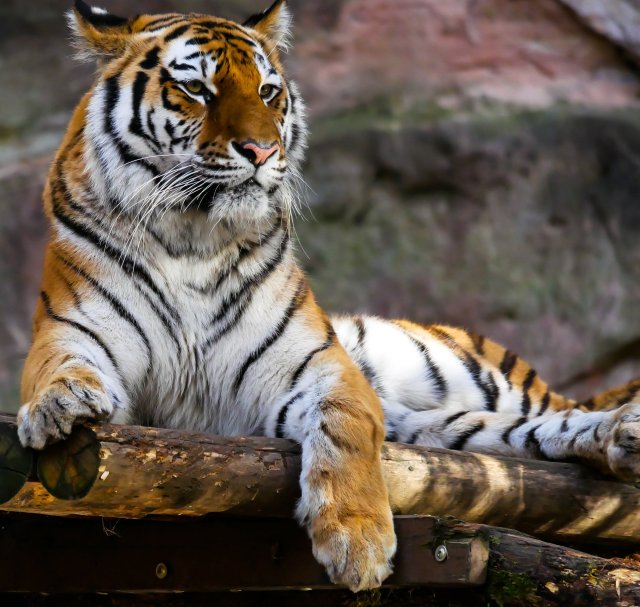Tigers and People: Exploring the Cultural Significance and Conservation Challenges
Tigers and People:
A Complex Relationship
Tigers, majestic and powerful creatures, have long captivated the human imagination. These magnificent big cats have been revered and feared in equal measure throughout history. However, the relationship between tigers and people is far more intricate than mere fascination. In this article, we will explore the various aspects of this relationship, from conservation efforts to conflicts, and delve into the importance of coexistence between Tigers and People.
The Threatened Existence of Tigers
Tigers and People: Tigers, once widespread across Asia, are now critically endangered. According to the World Wildlife Fund (WWF), there are only around 5,600 tigers left in the wild. This alarming decline is primarily due to habitat loss, poaching, and human-wildlife conflicts.
Habitat Loss
As human populations expand and encroach upon tiger habitats, forests are being cleared for agriculture, infrastructure development, and logging. This loss of habitat fragments tiger populations, making it harder for them to find suitable mates and maintain genetic diversity. It also leads to increased human-tiger interactions, often resulting in conflicts.
Poaching
Poaching remains a significant threat to tigers. Their body parts, such as bones, skin, and whiskers, are highly valued in traditional medicine and fetch high prices on the black market. Despite international bans on tiger trade, illegal poaching continues to persist, driven by demand from certain Asian countries.
Conservation Efforts
Recognizing the urgent need to protect tigers, various organizations and governments have implemented conservation initiatives. These efforts aim to safeguard tiger populations, restore their habitats, and mitigate human-wildlife conflicts.
Tiger Reserves and Protected Areas
Establishing tiger reserves and protected areas has been a crucial step in tiger conservation. These designated zones provide a safe haven for tigers, allowing them to roam freely without the threat of poaching or habitat destruction. For example, India’s Project Tiger, launched in 1973, has been instrumental in creating protected areas and increasing tiger populations.
Community-Based Conservation
Engaging local communities in tiger conservation is vital for long-term success. By involving communities in decision-making processes and providing them with alternative livelihood options, conservation efforts can reduce human-wildlife conflicts. For instance, the Snow Leopard Trust in Central Asia works with local herders to protect snow leopards, a species that shares its habitat with tigers.
Human-Wildlife Conflicts
As human populations continue to expand, conflicts between people and tigers become more frequent. These conflicts arise due to competition for resources, such as land and prey, and the occasional attacks on humans or livestock by tigers defending their territory.
Loss of Livestock
Tigers often prey on livestock, leading to economic losses for local communities. In retaliation, people may resort to killing tigers to protect their livelihoods. Finding sustainable solutions to compensate for these losses and prevent retaliatory killings is crucial for fostering coexistence.
Human Attacks
While rare, tiger attacks on humans do occur. In densely populated regions, where people live in close proximity to tiger habitats, the risk of such incidents increases. Education and awareness programs can help communities understand tiger behavior and take necessary precautions to minimize the risk of attacks.
Coexistence: The Way Forward
Preserving tigers and ensuring their long-term survival requires a balanced approach that addresses the needs of both tigers and people. Coexistence is the key to achieving this delicate balance.
Education and Awareness
Education plays a crucial role in fostering coexistence. By raising awareness about the importance of tigers and the need to protect their habitats, communities can become active participants in conservation efforts. Schools, community centers, and media platforms can all contribute to spreading knowledge and understanding.
Sustainable Livelihoods
Providing alternative livelihood options to communities living near tiger habitats can reduce their dependence on natural resources and minimize conflicts. Initiatives such as ecotourism, sustainable agriculture, and handicraft production can offer economic opportunities while preserving the environment.
Policy and Enforcement
Strong policies and effective enforcement are essential for combating poaching and habitat destruction. Governments must prioritize the protection of tigers and allocate sufficient resources to conservation efforts. International cooperation is also crucial to address the illegal wildlife trade that fuels poaching.
Conclusion
Tigers and People: The relationship between tigers and people is complex, marked by both admiration and conflict. While tigers face numerous threats, concerted conservation efforts offer hope for their survival. By prioritizing habitat protection, engaging local communities, and fostering coexistence, we can ensure that future generations continue to marvel at the beauty and power of these magnificent creatures.
Read More About White Tigers From Wikipedia




